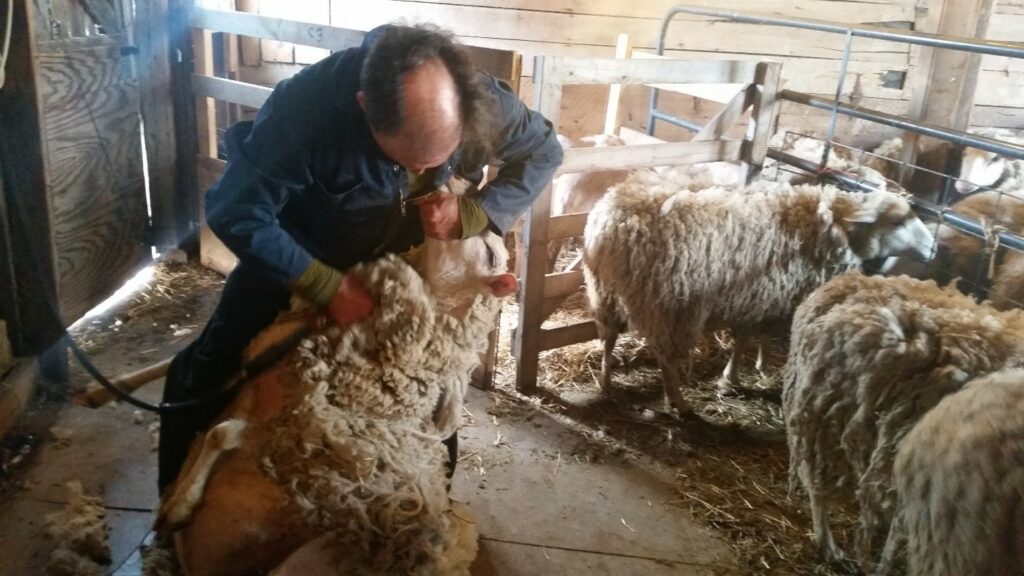Shearing Day on the Farm

Just like hearing the first spring peepers or seeing the red-winged blackbird are rights of springtime on the farm, so is shearing for the sheep. All year they’ve grown their wooly coats to help them keep warm, but as the temperatures rise, that extra layer can cause them to overheat. This means it’s time to schedule the shearing appointment so the sheep can be ready for summertime.
We all know it will be an epic day. Mom and Steve fix a huge breakfast of homemade hash, sautéed kale, scrambled eggs, a pile of cinnamon toast, and a big pot of black tea. Kara and I then head off to finish Monday morning chores and prepare for Chris the shearer’s arrival.
Kara has corralled the ewes into a smaller pen so they are less spooked and easier to catch (which is why it is called a “catch pen”). The sheep know that something is up because this is not their normal routine—and sheep are very attached to their routine. After a thorough cleaning of Chris’ utensils to prevent diseases from other flocks entering the farm, it’s time for setup and the well-practiced maneuvers of our 18th season of shearing.
Kara’s role is to catch the sheep and bring them into the small front area of the barn where Chris is working. In order to keep the pace moving along, he needs to be able to grab a new sheep just as soon as he lets a finished one go, setting the new sheep down on its rump so that it becomes docile. With nothing to kick against, the ewe gives up the struggle and allows Chris to run the noisy electric shears over her belly and brisket, then up her neck and along her side before he flips her over to shear her back.
This is when the sheep has a glimmer of the joy that comes with shearing, the best back scratch in months of growing all that wool! She nibbles and licks the air, a sign of sheepy pleasure. As Chris peels the wool off the ewe’s other side and clips the finishing touches on tail and legs, it’s time to let her back on her feet.
For a brief moment, the whir of the shears ceases, and this is where my part of the task comes to play. As Chris is catching the next sheep, I dive in, scooping up the fleece on the floor and scooting it to the side to be out of Chris’ way. The wool is still warm from the body heat of the sheep and is pungent with the sticky lanoline that naturally keeps the sheep water repellent. I stuff the fleece into a large bag before ducking out the barn door (careful not to let any sheep escape) and head to the garage.
In one of the bays, Kara has lain out an enormous tarp on the floor, and I begin piling the fleeces on top, one at a time. Whir go the shears, off runs the sheep, in I come for another bag full of fleece. Eight hours and 75 sheep later, shearing is finally complete. I’m always so impressed how Chris can keep up such intense work all day because Kara and I were both quite sore doing our pieces of the task!Now the garage bay is entirely full, stacked waist-high with raw wool, ready for skirting and bagging to take to the mill for processing into colorful yarn and fluffy roving. It’s quite a journey for that sheepy fluff to be transformed into yarn (and quite a road trip journey taking it to Ewetopia Fiber Mill in LaFarge).
With the shearing complete, the “freshly peeled” sheep are enjoying a good back scratch against the barn pillars as they munch on hay, dreaming of spring, and I’m in the garage bagging up their fleeces before they can be transformed into mittens, sweaters, or cute needle felted critters. Family farms produce food, but they also produce fiber—critical ingredients for human nutrition and comfort. Here’s to another year’s sheep shearing! See you down on the farm sometime.





